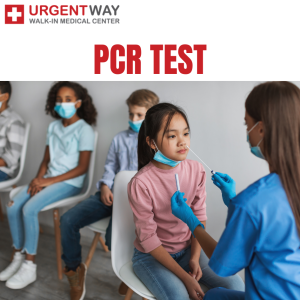Hours-long lines for coronavirus PCR tests are prompting public officials to urge the public to use a rapid, at-home antigen test instead, but public health experts warn that the 15-minute test may be less effective in some cases. Times tend to be false negatives.
Rapid coronavirus tests, also known as antigen tests, provide results in a matter of minutes, typically within 15 to 30 minutes after sample collection. These tests work by detecting specific proteins on the surface of the virus. They are often administered using nasal or throat swabs and can be conducted in various settings, including clinics, pharmacies, and even at home with certain kits.
One of the main advantages of rapid tests is their speed. They offer quick results, allowing for immediate identification of infected individuals and prompt initiation of isolation measures to prevent further transmission. This rapid turnaround time makes them particularly valuable in settings where timely decisions are crucial, such as screening large groups of people before events or identifying cases in healthcare settings.
However, rapid tests also have limitations. While they are highly specific, meaning they accurately identify positive cases, they are generally less sensitive than PCR tests. This means they may miss some cases, especially those with low viral loads or during the early stages of infection when virus levels are still rising. False-negative results can occur, leading to a potentially false sense of security and allowing infected individuals to unknowingly spread the virus.
The Role of PCR Tests
PCR tests, on the other hand, are considered the gold standard for COVID-19 diagnosis. These tests detect the genetic material of the virus by amplifying specific regions of the viral genome through multiple cycles of heating and cooling. PCR tests are typically performed in laboratory settings by trained professionals and require specialized equipment.
One of the key advantages of PCR tests is their high sensitivity. They can detect even small amounts of viral RNA, making them highly accurate, especially during the early stages of infection when viral loads are low. PCR tests are less likely to produce false-negative results compared to rapid tests, making them more reliable for confirming cases, particularly in individuals with mild or asymptomatic infections.
However, PCR tests also have some drawbacks, primarily related to their longer turnaround time and higher cost. Unlike rapid tests, which provide results within minutes, PCR tests often take several hours to process, and in some cases, results may not be available for a day or more, depending on laboratory capacity and testing demand. Additionally, the infrastructure required for PCR testing, including laboratory facilities and trained personnel, can be challenging to scale, leading to delays during surges in cases.
Making an Informed Decision
When deciding between rapid coronavirus tests and PCR tests, several factors should be considered:
- Purpose of Testing: Determine the reason for testing and the urgency of obtaining results. If rapid identification of positive cases is critical for immediate public health interventions, such as contact tracing or outbreak control, a rapid test may be preferred. However, if confirming a diagnosis or ruling out infection with high accuracy is paramount, especially in individuals with symptoms or high-risk exposures, a PCR test is likely more appropriate.
- Symptoms and Exposure History: Consider the individual's symptoms and exposure history. Rapid tests may be sufficient for asymptomatic individuals or those with mild symptoms, particularly if they have had recent close contact with a confirmed case. However, PCR tests are recommended for individuals with moderate to severe symptoms, known exposures to COVID-19, or those at higher risk of complications, such as older adults or individuals with underlying health conditions.
- Testing Availability and Access: Assess the availability and accessibility of testing options in your area. Rapid tests may be more readily available in certain settings, such as pharmacies or community testing sites, and offer convenience for on-the-spot testing. However, PCR tests may be necessary if rapid tests are unavailable or if confirmatory testing is required after an initial rapid test result.
- Accuracy and Reliability: Consider the sensitivity and specificity of each test type. While rapid tests offer quick results, they may have lower sensitivity compared to PCR tests, increasing the risk of false-negative results. PCR tests, while more accurate, may take longer to process and may not be feasible for immediate testing needs.
The choice between rapid coronavirus tests and PCR tests depends on various factors, including the purpose of testing, symptoms and exposure history, testing availability, and accuracy requirements. Rapid tests offer speed and convenience but may have limitations in sensitivity, leading to potential false-negative results. PCR tests provide higher sensitivity and accuracy but may involve longer turnaround times and higher costs.
Both types of tests play important roles in the overall strategy for controlling the spread of COVID-19, and understanding their strengths and limitations is essential for making informed decisions about testing and managing the pandemic effectively.






